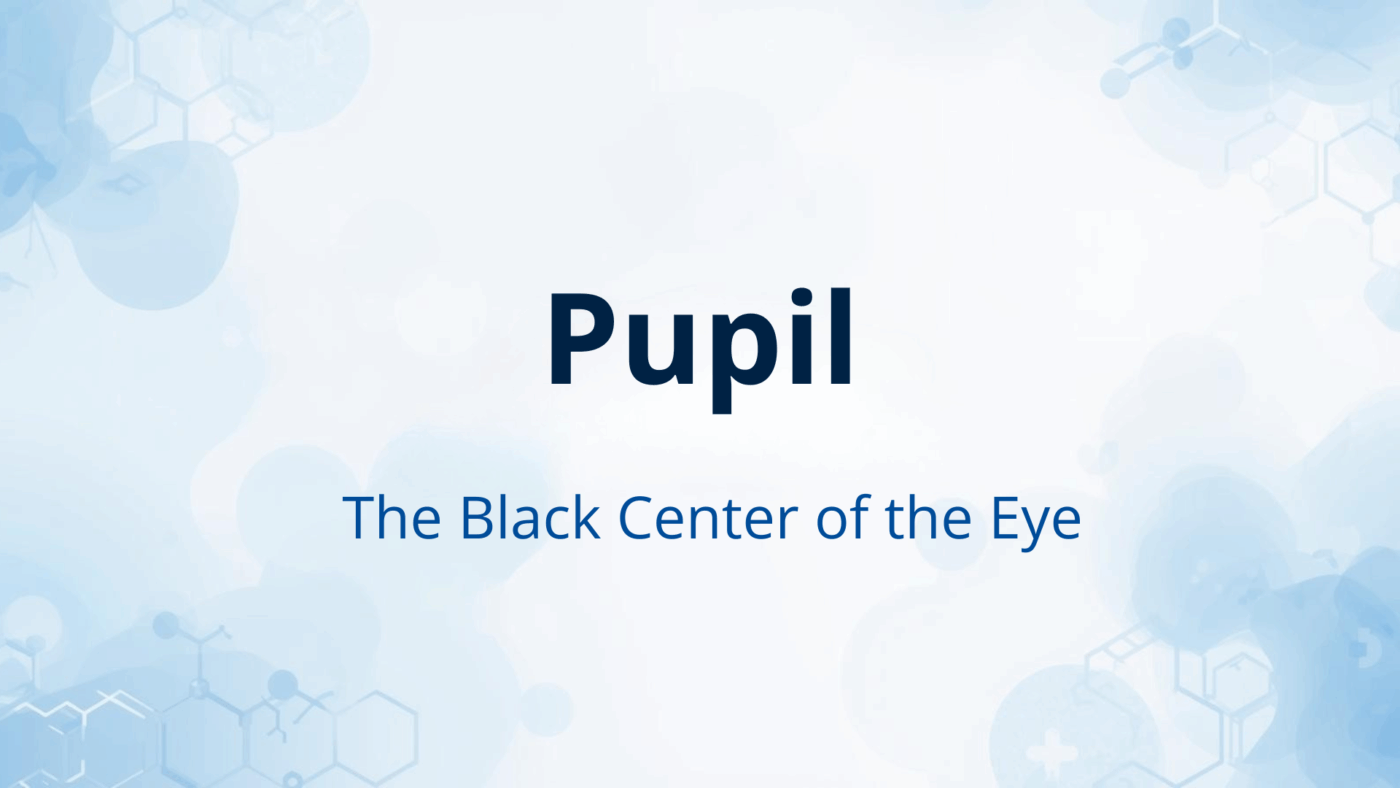OET Vocabulary, Word of the Day
What Does Pupil Mean? Medical Term for the Black Center of the Eye
Have you ever noticed how your eyes adjust when you step from bright sunlight into a dark room?
The small black circle in the center of your eye changes size instantly — and that structure has a name: the pupil.
👁 What Does “Pupil” Mean?
The pupil is the dark circular opening in the center of the iris — the colored part of your eye.
It allows light to enter the eye and reach the retina, enabling vision.
The term comes from the Latin word pupilla, meaning “little doll,” because if you look closely into someone’s eye, you can see a tiny reflection of yourself in their pupil.
In medicine, it’s a fundamental anatomical term used in ophthalmology, neurology, and general physical examinations.
🔍 Clinical Usage
In clinical settings, the word pupil appears frequently in neurological and ophthalmic examinations.
Doctors often describe how the pupils respond to light, as this reaction helps assess brain function and optic nerve health.
You’ll often see the phrase “Pupils are equal and reactive to light” written in patient notes. It means that both pupils respond normally when light is shone into the eyes — a key sign of normal neurological function.
Here’s how it might appear in real clinical documentation:
Example: Pupils are equal and reactive to light. No anisocoria noted.
→ Both pupils react normally to light. No difference in size observed.
Other common expressions include:
- Dilated pupils – pupils that are larger than normal
- Constricted pupils – pupils that are smaller than normal
- Fixed pupils – pupils that do not respond to light
These descriptions help clinicians quickly record and communicate critical neurological observations.
🎥 Watch the Short Video
👉 Watch our 20-second clip: Pupil – Learn how to pronounce it.
Study with OET BANK
Stop wasting time comparing OET materials.
With OET BANK, you get:
- Premium-quality OET materials, built by professionals
- A focused, efficient study path — no unnecessary content
- A system designed to help you pass OET once — without trial and error
If you want to prepare properly and pass with confidence,
you don’t need to look anywhere else.
Pick your materials and start today — with OET BANK.




